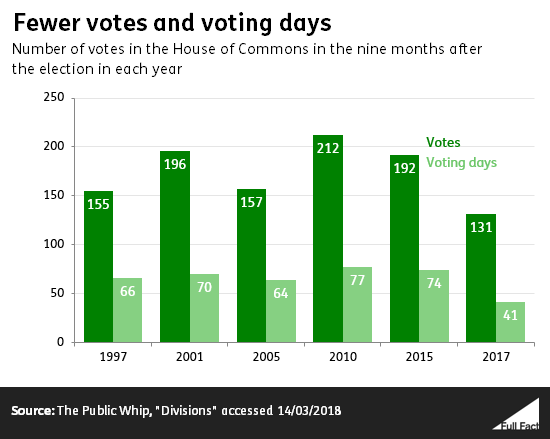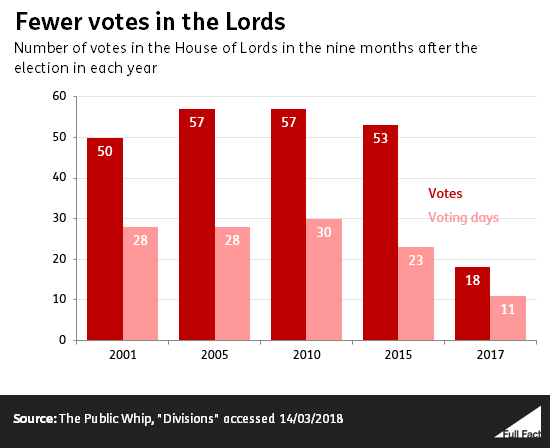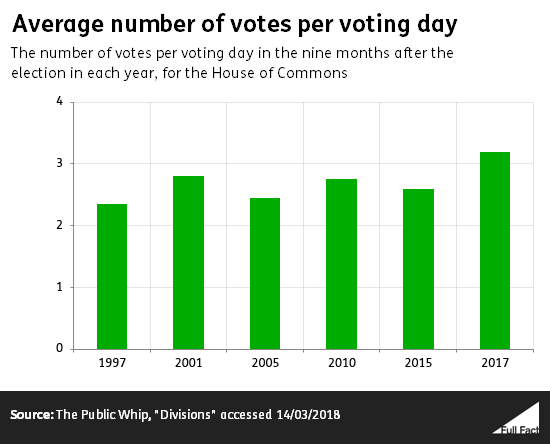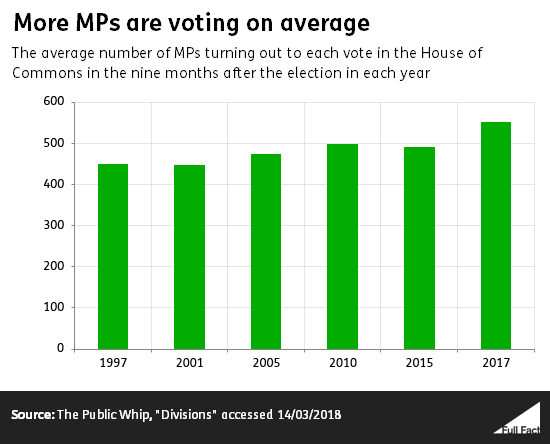“Analysis by The Times shows that the number of votes held in the nine months since the general election, when Theresa May lost her majority, is lower than after every election won by David Cameron and Tony Blair.”
The Times, 12 March 2018
In the nine months since the 2017 election, there have been 131 votes, or ‘divisions’ in the House of Commons. It’s correct that this figure is lower than the same period after each election since 1997.
131 is slightly higher than the figure cited in the Times article, as it includes votes on the 13 March.
Honesty in public debate matters
You can help us take action – and get our regular free email
Voting in numbers
MPs have spent fewer days voting in the House of Commons in the first nine months of the latest parliament compared to the same period after previous elections. That’s according to information from independent website the Public Whip, which monitors parliament and its members.

There have also been fewer votes and voting days in the House of Lords in the first nine months of this parliament, compared to others over the last 20 years. Information for the House of Lords is only available on Public Whip back to 1999, so we don’t have figures for after the 1997 election.

Almost half of the votes in the House of Commons since the election last year—58—have been about the EU Withdrawal Bill.
If you look at the number of votes happening on each voting day in the House of Commons, then the number of votes per voting day has been slightly higher since the 2017 election, compared to after previous elections.

And although the number of votes is lower, the average turnout of MPs has increased—551 per vote in the nine months since the 2017 election. Since 1997 the overall number of MPs has decreased from 659 to a low of 646 before increasing again to 650 where it has stayed since 2010.

Passing legislation in this parliamentary session
In terms of complete pieces of legislation passed, the Institute for Government think tank says that the current parliament, as of January, had passed a slightly higher proportion of its planned legislation than the parliament following the 2015 election, and the 2010 election (during the Coalition government).
It also said that this parliament will have “a heavy workload” and that the parliamentary session is expected to last for two years in order to “allow MPs the time ‘to fully consider the laws required to make Britain ready for Brexit’”. It also said that legislation tends to be passed more slowly under minority governments.
A note on the numbers
We’ve looked at the nine months following parliament’s return after an election. Our analysis also includes four votes in the House of Commons on the 13 March which happened after The Times article was published.
Public Whip warns that a few votes in the House of Commons may be missing from figures for 1997, while votes in the House of Lords have only been collected since 1999. It also says there may be some inaccuracies in the information it collects. The parliament website also publishes figures on the number of divisions in parliament, but even this source isn’t entirely complete—there is a gap in the data in 2015, for example. Comparing the two, the figures on the number of votes in 2017 are the same.



